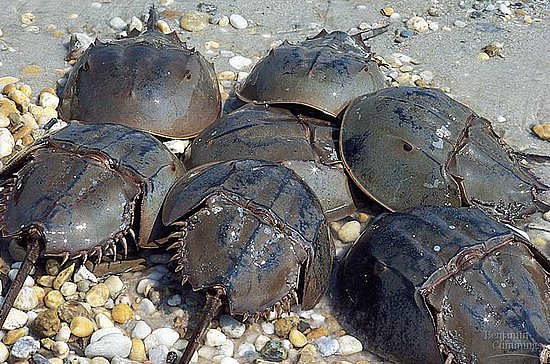45+ Horseshoe Crab Eyes
Horseshoe Crab Eyes. Meanwhile, divide the ground beef into four equal parts and form into patties. Horseshoe crabs have several pairs of eyes.

Horseshoe crabs have nine eyes and their vision has been the focus of much physiological research. Instead, gently pick it up by both sides of the prosoma using both hands. Horseshoe crab makes it very valuable in testing for injectable medicines, vaccines and sterile medical equipment.
hevea bois dur hermes etain vs etoupe holton rower pour painting geberit wc suspendu
BOGLEECH Magic the Gathering Insects
The animal has many eyes. Horseshoe crabs have nine eyes. Anyone who has been swimming on the atlantic coast has seen him. Keffer hartline and clarence graham, groundbreaking research using the horseshoe crab as model has been conducted in the field of vision.

The two largest eyes are compound and useful for finding mates. *never pick up a horseshoe crab by its tail, as it can harm the animal. Meanwhile, divide the ground beef into four equal parts and form into patties. • identify the horseshoe crab’s external organs, including the book gills, telson (tail), compound eyes, mouth, chelicerae and other legs. Horseshoe.

Rhythms of locomotion expressed by limulus polyphemus, the american horseshoe crab: The crabs are especially sensitive to light. Instead, gently pick it up by both sides of the prosoma using both hands. You see the eye, which may be excised from the animal, and will, with some care, continue to live The females of all species are larger than the.

• identify the horseshoe crab’s external organs, including the book gills, telson (tail), compound eyes, mouth, chelicerae and other legs. The two largest eyes are compound and useful for finding mates. Much of what is understood about the basic principles of vision is based on studies of horseshoe crab eyes. The horseshoe crab’s compound eyes are another important tool that.

These are sometimes referred to as the cephalothorax the abdomen and the tail. Beginning in 1931 with h. Each of the horseshoe crab's lateral eyes contains about 1,000 photoreceptors, known as ommatidia, and each one is about 100 times bigger than the cones and rods found in the human eye, making the. The legendary horseshoe hammond casino is chicagoland's number.

Apposition eyes are the most common form of eye, and are presumably the ancestral form of compound eye. The horseshoe crab has a hard exoskeleton and 10 legs which it uses for walking along the seafloor. Horseshoe crabs have nine eyes scattered throughout the body and several more light receptors near the tail. The underside of the compound eye cuticle.

The telson helps the crab to flip itself over if waves on the beach turn it over. The two largest eyes are compound and useful for finding mates. Beginning in 1931 with h. *never pick up a horseshoe crab by its tail, as it can harm the animal. The horseshoe crab is the only living chelicerate with compound eyes.

It has eyes on and even under its head, and there are even eyes under its tail. The eyes have nearly 1,000 facets in the adult limulus, and have a distinct pseudopupil that varies in size with light and dark. Horseshoe crabs have several pairs of eyes. The crabs are especially sensitive to light. These eyes have a monochromatic vision.

Rhythms of locomotion expressed by limulus polyphemus, the american horseshoe crab: Horseshoe crabs have nine eyes and their vision has been the focus of much physiological research. When a male has found a female, the male holds onto the female’s shell with its pedipalps or hooks, clinging to the female’s opisthosoma, or middle section of her body. His eye is.

The horseshoe crab has also proved valuable to the medical field in another way. These eyes have a monochromatic vision. Keffer hartline and clarence graham, groundbreaking research using the horseshoe crab as model has been conducted in the field of vision. Bake for 20 minutes in the preheated oven, or until golden brown. Much of what is understood about the.